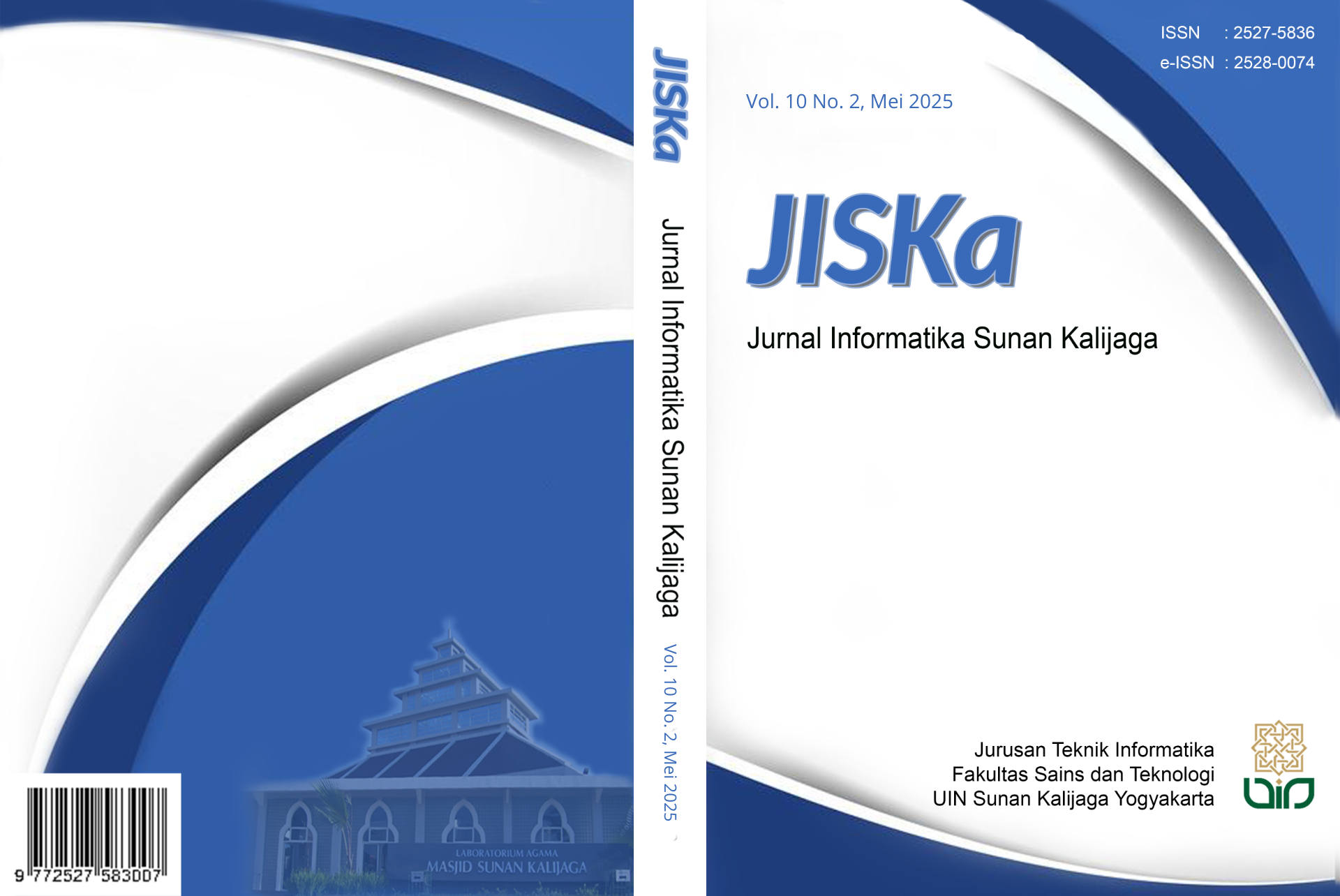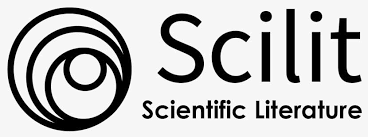Perbandingan Sensitivitas Metode SAW, MAUT dan WSM pada Anugerah Mutu Non-Akademik Universitas
DOI:
https://doi.org/10.14421/jiska.2025.10.2.207-220Keywords:
Decision Support System, SAW, MAUT, WSM, UniversityAbstract
Decision Support System works best with suitable method. Unfortunately, not all methods are equally used. Two rarely used methods are MAUT and WSM methods. To find out whether a method is more suitable for a case than another method is to do a sensitivity test. By doing sensitivity tests between the two methods and other methods such as the commonly used SAW in the same case, it’s possible to find out the comparison of sensitivity percentages between the three. One case that can be helped by a Decision Support System using the three methods is ANOMIK assessment at universities. The three methods produced the same best alternative, namely Faculty 9. After doing a sensitivity test, the results showed that WSM method was the most sensitive with a value of 4.954%, followed by SAW method with a value of 4.901% and finally MAUT method with 3.844%.
References
Emovon, I., & Oghenenyerovwho, O. S. (2020). Application of MCDM Method in Material Selection for Optimal Design: A Review. Results in Materials, 7, 100115. https://doi.org/10.1016/j.rinma.2020.100115
Fishburn, P. C. (1967). Letter to the Editor—Additive Utilities with Incomplete Product Sets: Application to Priorities and Assignments. Operations Research, 15(3), 537–542. https://doi.org/10.1287/opre.15.3.537
Gorry, G. A., & Morton, M. S. S. (1971). A Framework for Management Information Systems. Massachusetts Institute of Technology. https://dspace.mit.edu/bitstream/handle/1721.1/47936/frameworkformana00gorr.pdf
Harahap, M. A. K., Hardisal, H., Ahyuna, A., & Rahim, R. (2022). Leveraging the Decision Support System and Simple Additive Weighting Method for Optimal Retail Location Identification. JINAV: Journal of Information and Visualization, 3(2), 174–180. https://doi.org/10.35877/454RI.jinav1485
Keeney, R. L., & Raiffa, H. (1979). Decisions with Multiple Objectives: Preferences and Value Trade-Offs. IEEE Transactions on Systems, Man and Cybernetics, 9(7), 403. https://doi.org/10.1109/TSMC.1979.4310245
Resti, N. C. (2017). Penerapan Metode Simple Additive Weighting (SAW) pada Sistem Pendukung Keputusan Pemilihan Lokasi untuk Cabang Baru Toko Pakan UD. Indo Multi Fish. INTENSIF, 1(2), 102. https://doi.org/10.29407/intensif.v1i2.839
Maharani, D., & Nata, A. (2020). Perbandingan Metode MFEP dan MAUT dalam Seleksi Calon Peserta Olimpiade Sains Nasional (OSN). JURTEKSI (Jurnal Teknologi dan Sistem Informasi), 6(3), 247–252. https://doi.org/10.33330/jurteksi.v6i3.793
Pahlevi, R. F. (2021). Implementasi Algoritma Weighted Sum Model dalam Sistem Penjaminan Mutu Perguruan Tinggi. JATISI (Jurnal Teknik Informatika dan Sistem Informasi), 8(2), 935–946. https://doi.org/10.35957/jatisi.v8i2.700
Panjaitan, D. C., Juliansa, H., & Yanto, R. (2021). Perbandingan Metode SAW dan WP pada Sistem Pendukung Keputusan dalam Kasus Pemilihan Kegiatan Ekstrakulikuler. Jurnal Ilmiah Binary STMIK Bina Nusantara Jaya Lubuklinggau, 3(1), 30–38. https://doi.org/10.52303/jb.v3i1.38
Qomariah, S., & Rangan, A. Y. (2020). Perbandingan Metode SAW dan MFEP Sistem Pendukung Keputusan Penyeleksian Atlet Pencak Silat. Just TI (Jurnal Sains Terapan Teknologi Informasi), 12(1), 8. https://doi.org/10.46964/justti.v12i1.175
Rahayu, M. I., Siregar, M. K., & Desnia, M. (2022). Sistem Rekomendasi Pemilihan Produk Basic Skincare Berdasarkan Jenis Kulit Menggunakan Algoritma Simple Additive Weighting (SAW). Jurnal Teknologi Informasi dan Komunikasi, 12(2), 1–6. https://doi.org/10.58761/jurtikstmikbandung.v12i2.170
Setiawan, G. W., Wahyudi, J., & Sudarsono, A. (2022). Analisis Perbandingan Metode SAW dan Metode Topsis Melalui Pendekatan Uji Sensitivitas Penilaian Kinerja Pegawai (Studi Kasus: Dinas Perhubungan Bengkulu Tengah). MEANS (Media Informasi Analisa dan Sistem), 6(2), 169–173. https://doi.org/10.54367/means.v6i2.1528
Solikhun, S. (2017). Perbandingan Metode Weighted Product dan Weighted Sum Model dalam Pemilihan Perguruan Swasta Terbaik Jurusan Komputer. KLIK - Kumpulan Jurnal Ilmu Komputer, 4(1), 70. https://doi.org/10.20527/klik.v4i1.75
Sugianto, R. A., Roslina, R., & Situmorang, Z. (2021). Kombinasi Metode Simple Additive Weigthing dan Weigthed Product untuk Seleksi Proposal Program Kreatifitas Mahasiswa. Jurnal Media Informatika Budidarma, 5(2), 564. https://doi.org/10.30865/mib.v5i2.2929
Syahputra, Y. H., Santoso, I., & Lubis, Z. (2022). Sistem Pendukung Keputusan Penerimaan Karyawan Terbaik Menggunakan Metode Weighted Sum Model (WSM). Explorer, 2(2), 39–47. https://doi.org/10.47065/explorer.v2i2.249
Więckowski, J., & Sałabun, W. (2023). Sensitivity Analysis Approaches in Multi-Criteria Decision Analysis: A Systematic Review. Applied Soft Computing, 148, 110915. https://doi.org/10.1016/j.asoc.2023.110915
Zadeh, L. A. (1963). Optimality and Non-Scalar-Valued Performance Criteria. IEEE Transactions on Automatic Control, 8(1), 59–60. https://doi.org/10.1109/TAC.1963.1105511
Downloads
Published
How to Cite
Issue
Section
License
Copyright (c) 2025 Muhammad Galih Wonoseto, Muhammad Abu Shaker Hunaif

This work is licensed under a Creative Commons Attribution-NonCommercial 4.0 International License.
Authors who publish with this journal agree to the following terms as stated in http://creativecommons.org/licenses/by-nc/4.0
a. Authors retain copyright and grant the journal right of first publication with the work simultaneously licensed under a Creative Commons Attribution License that allows others to share the work with an acknowledgement of the work's authorship and initial publication in this journal.
b. Authors are able to enter into separate, additional contractual arrangements for the non-exclusive distribution of the journal's published version of the work (e.g., post it to an institutional repository or publish it in a book), with an acknowledgement of its initial publication in this journal.
c. Authors are permitted and encouraged to post their work online (e.g., in institutional repositories or on their website) prior to and during the submission process, as it can lead to productive exchanges, as well as earlier and greater citation of published work.










